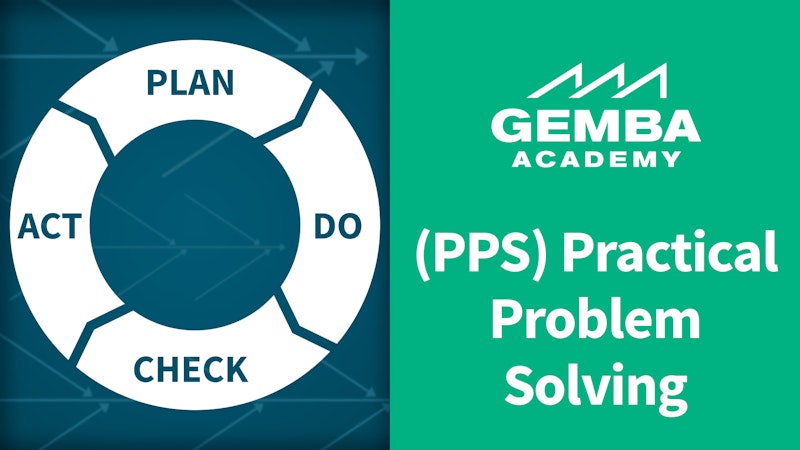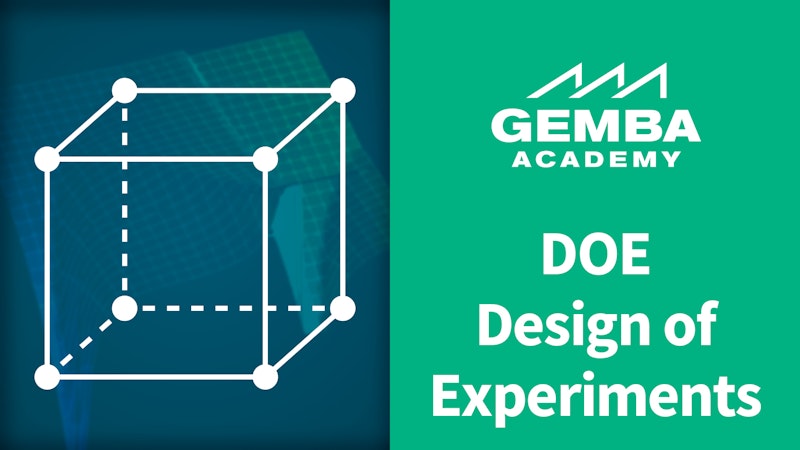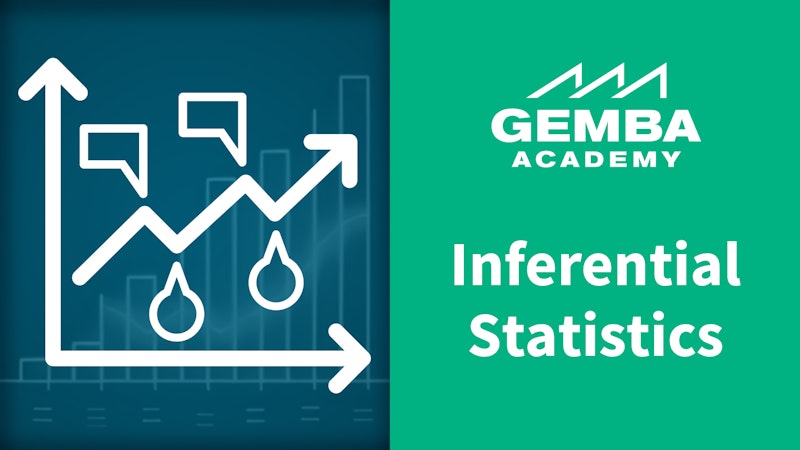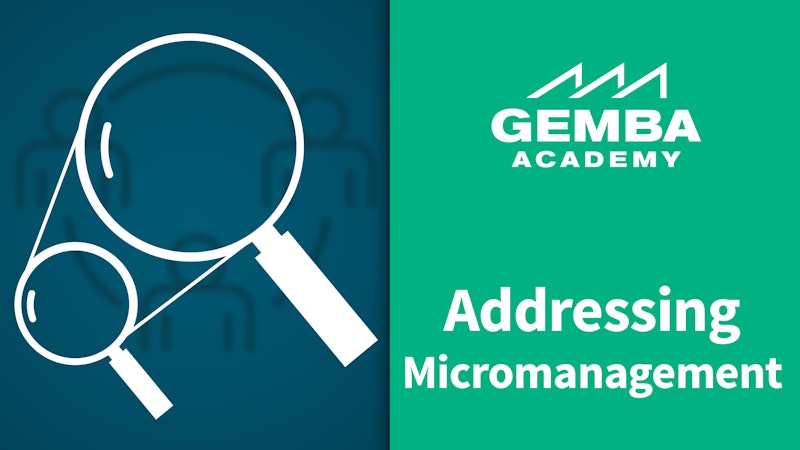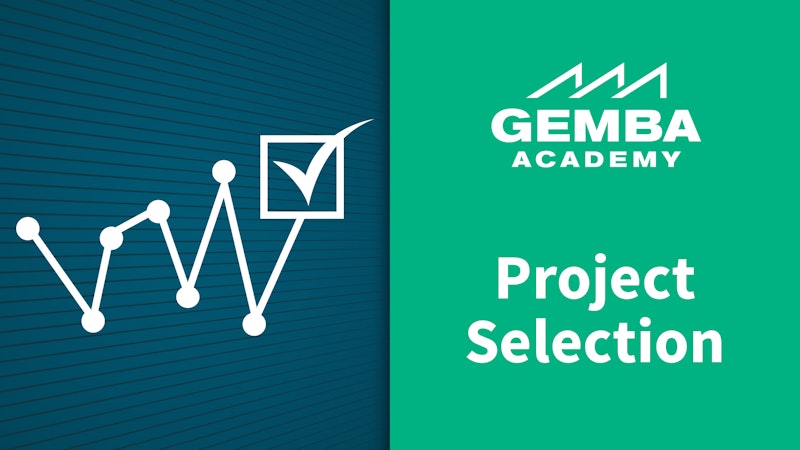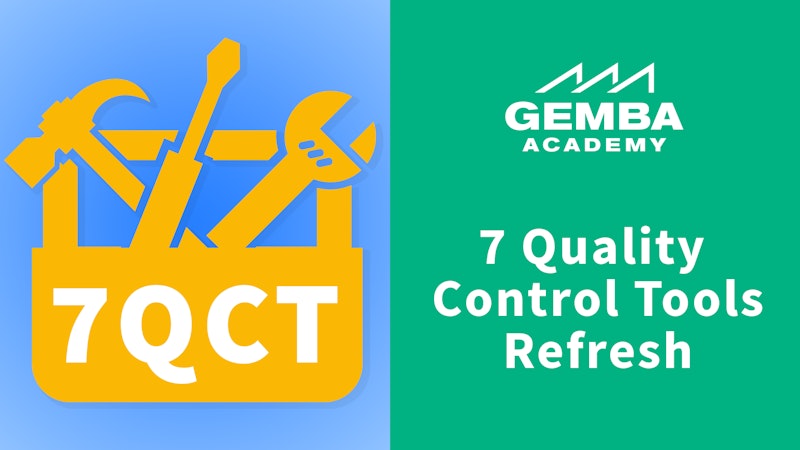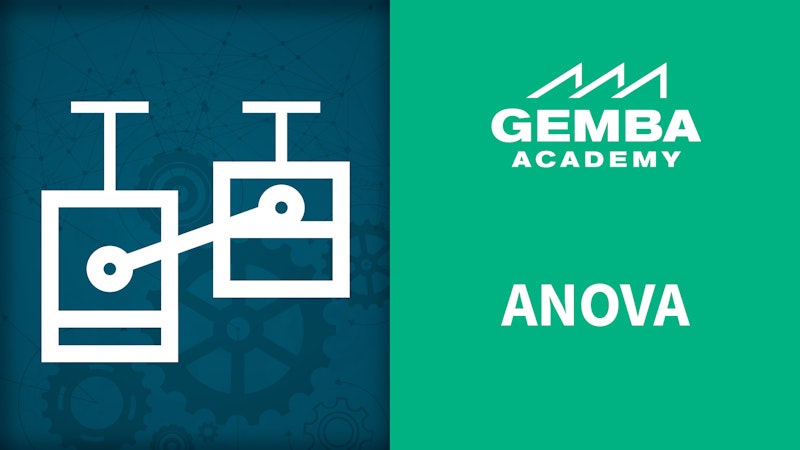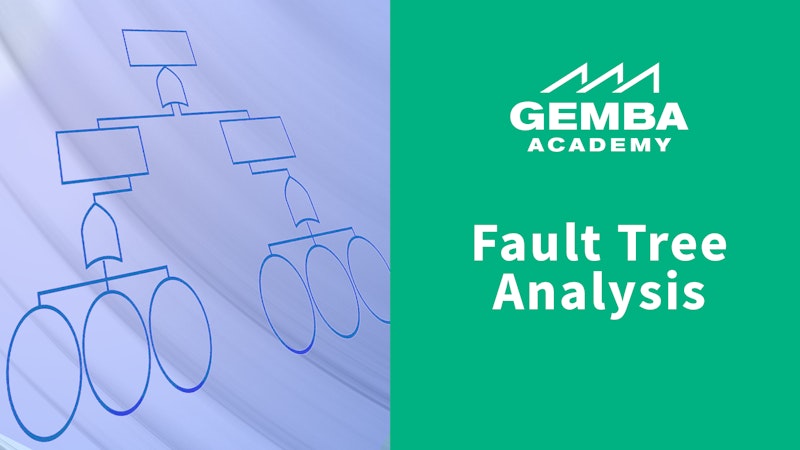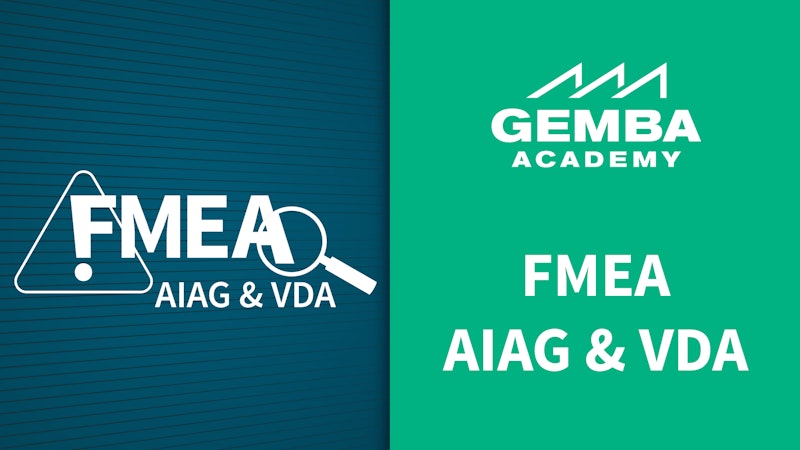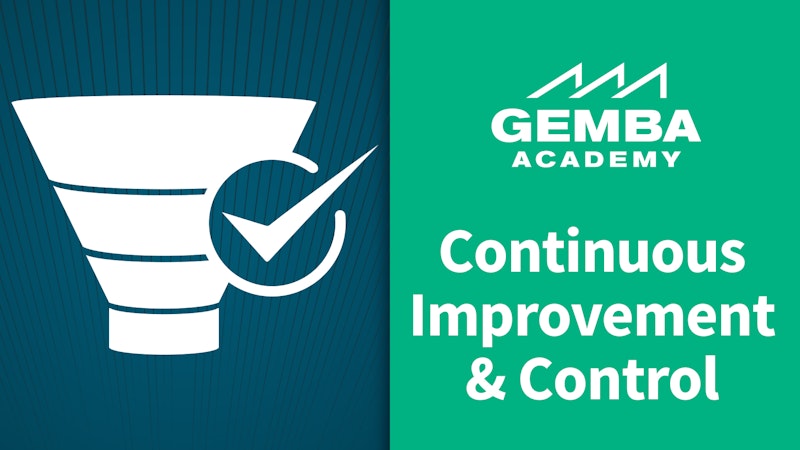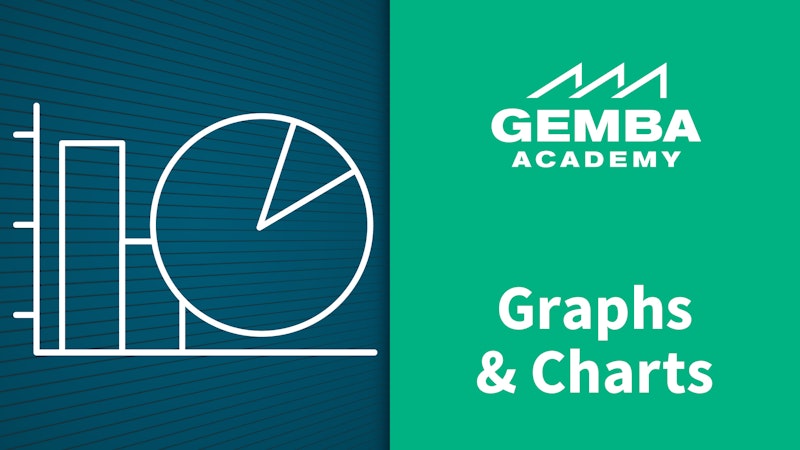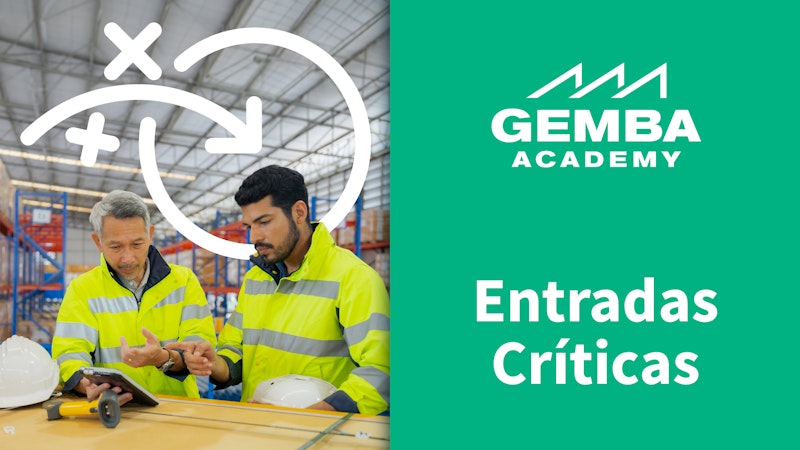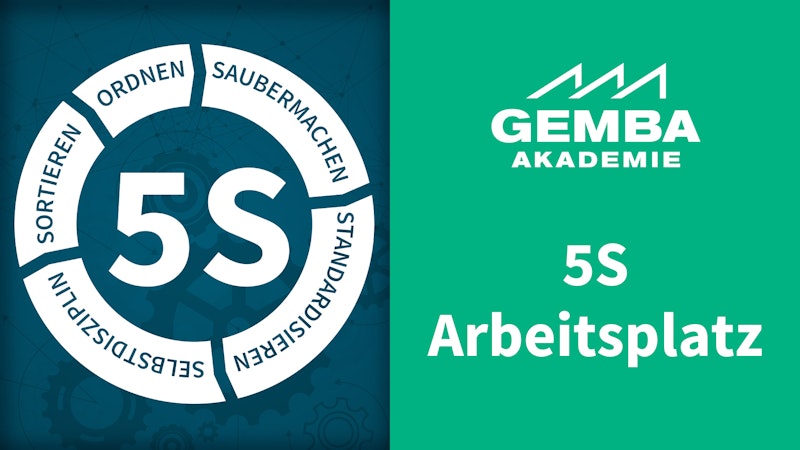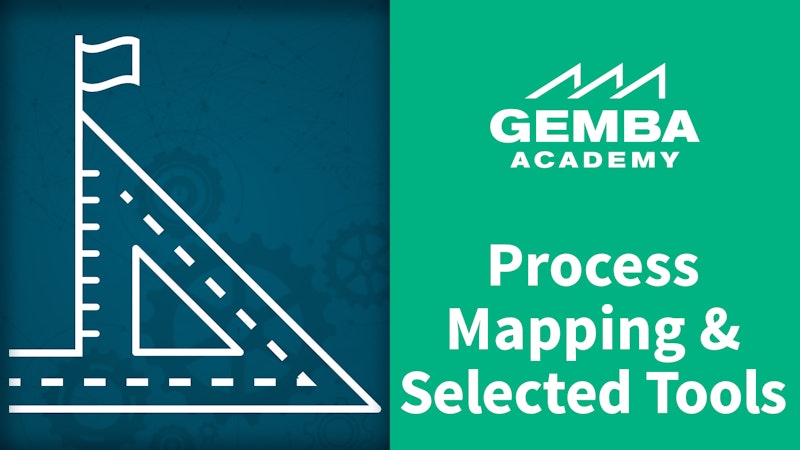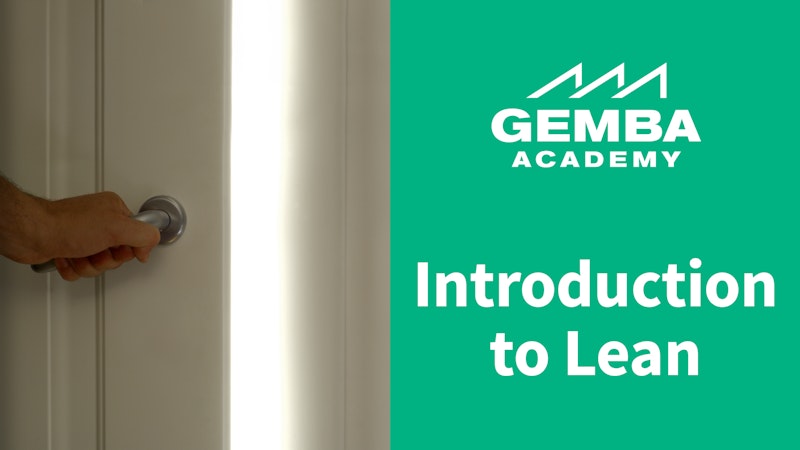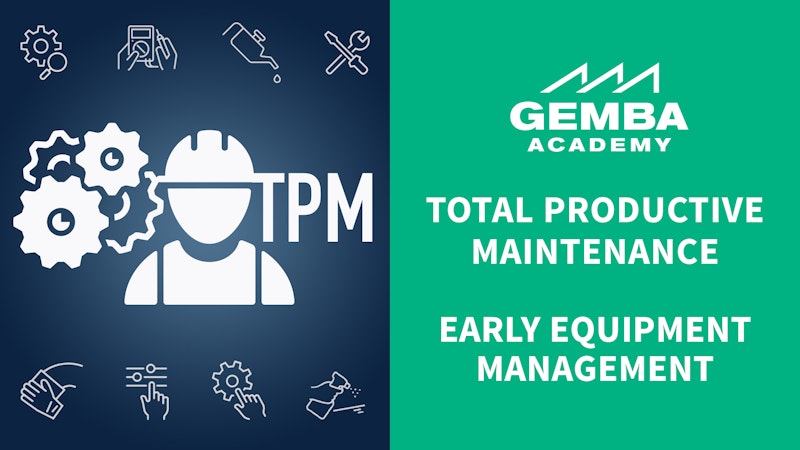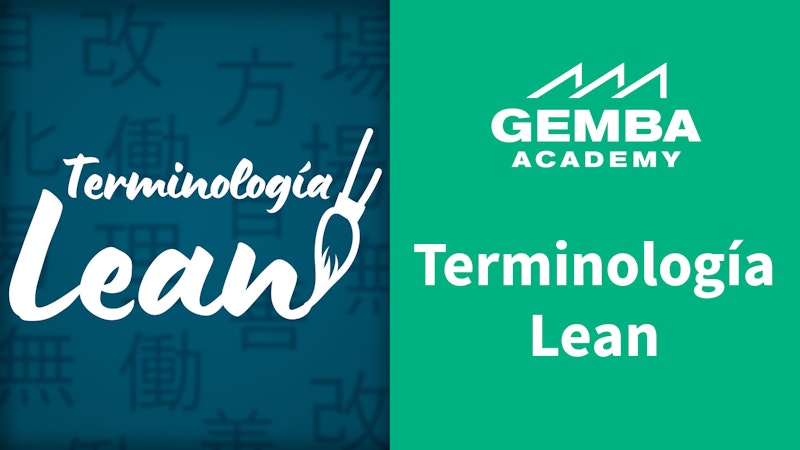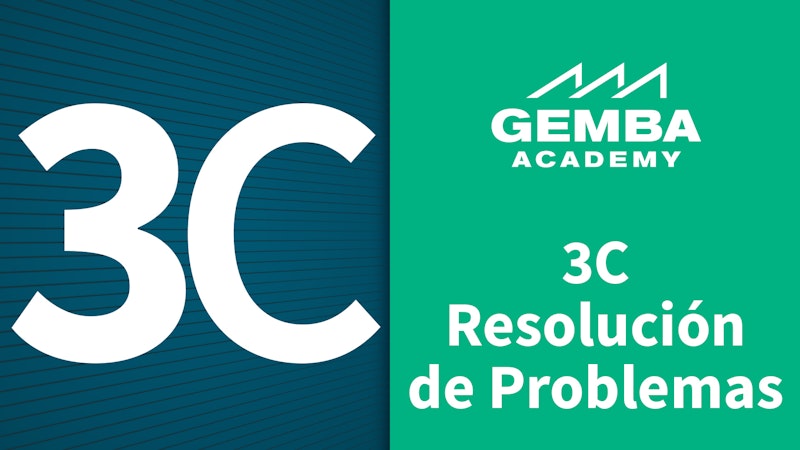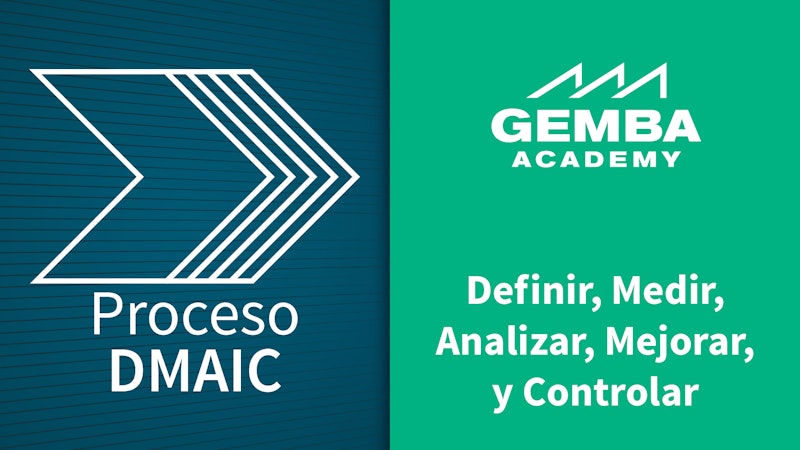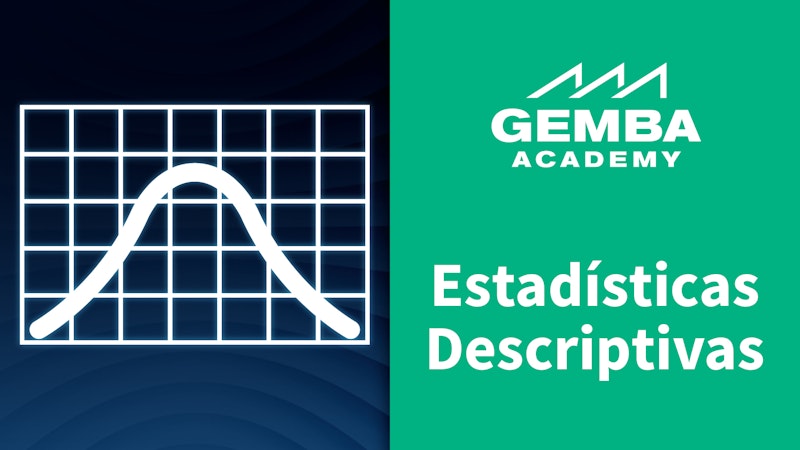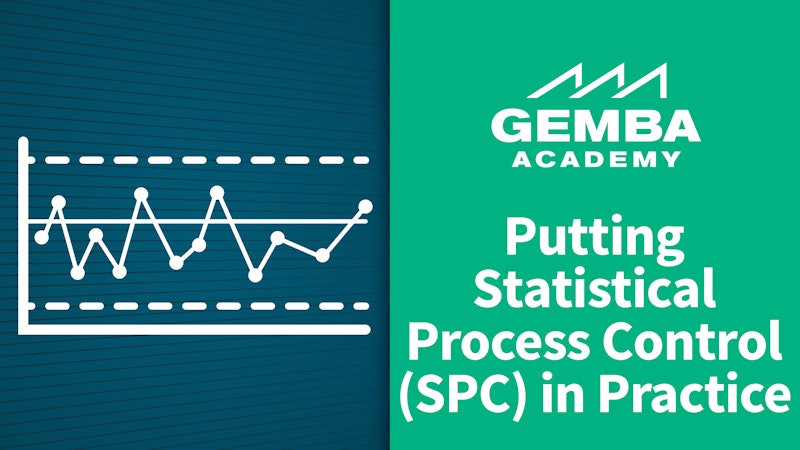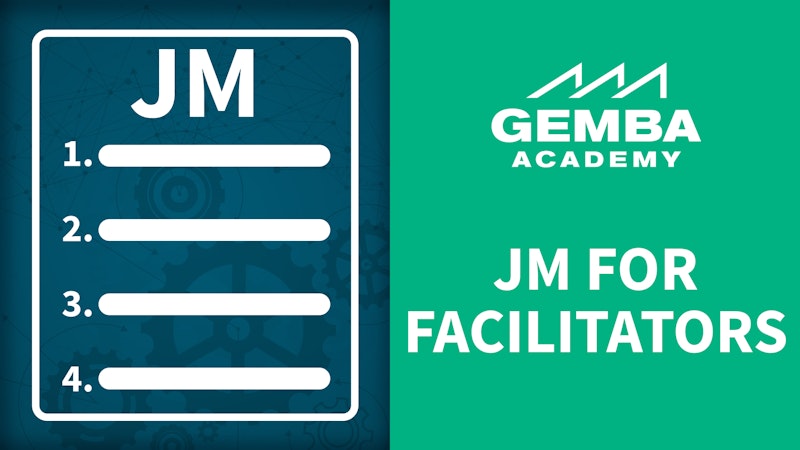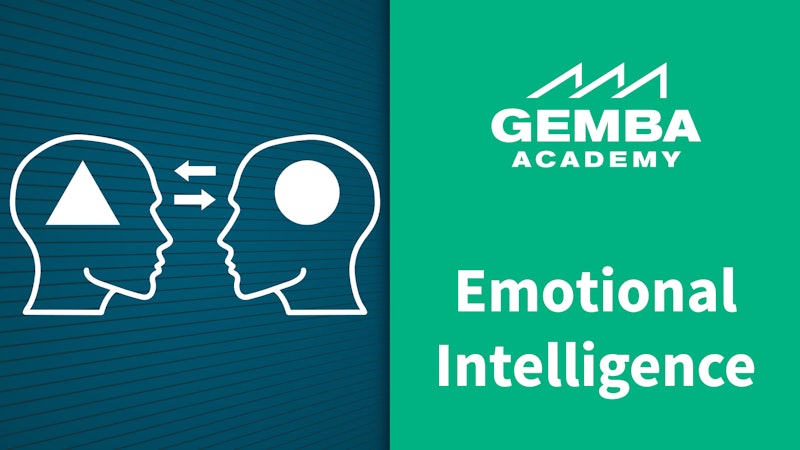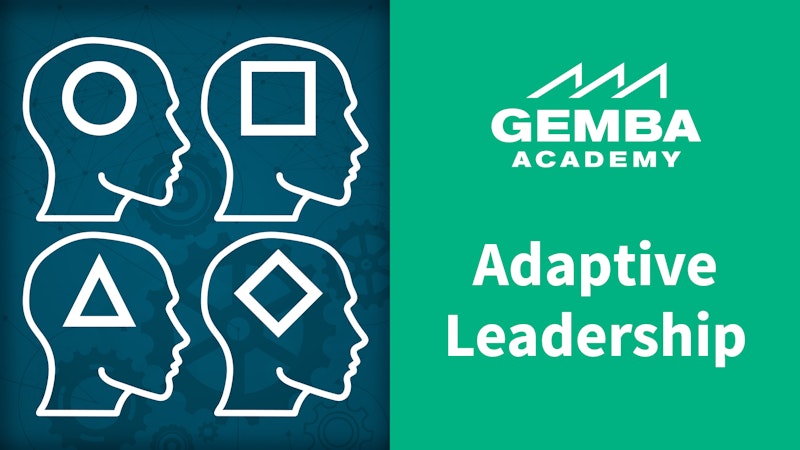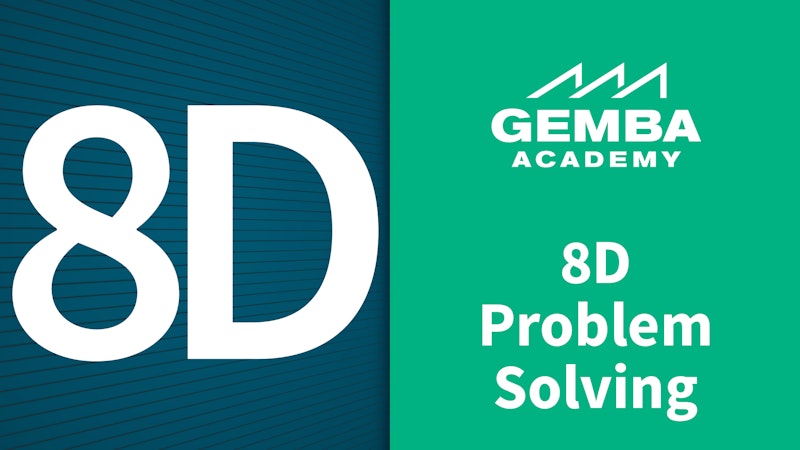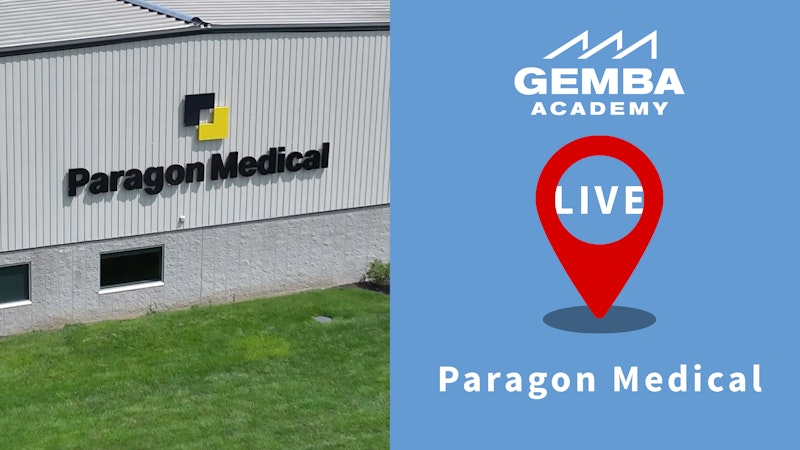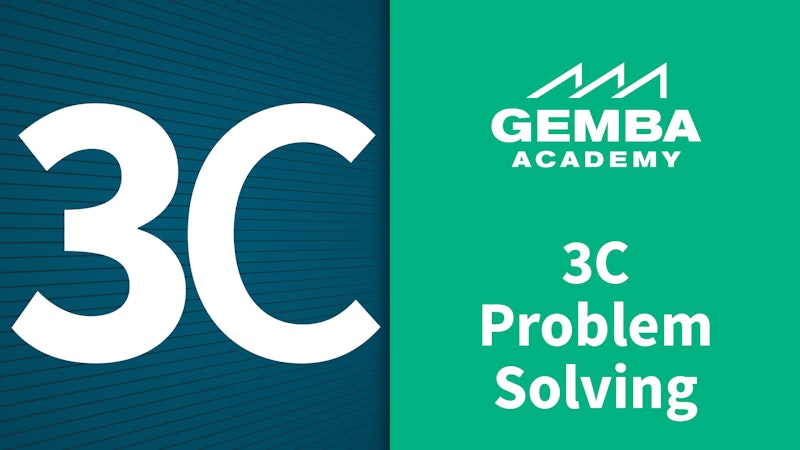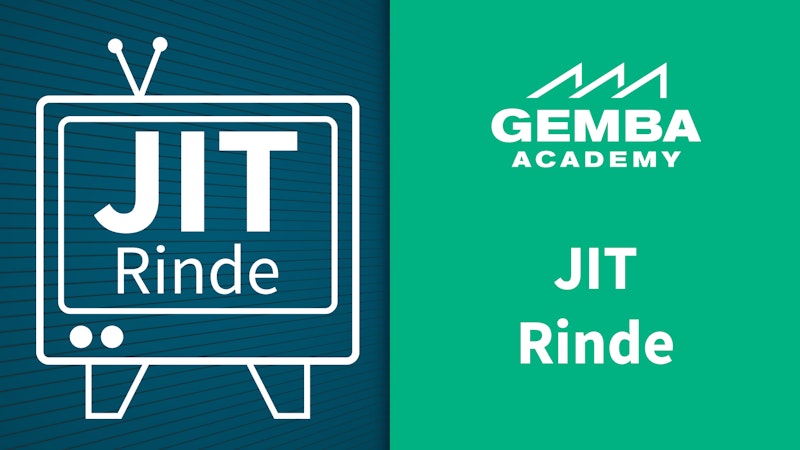New Videos

Practical Problem Solving
Problem-solving is at the heart of continuous improvement and business excellence. Eight-step practical problem-solving is a structured but flexible approach that guides teams through problem definition, cause analysis, and the development and implementation of countermeasures. Learn the many investigative techniques, statistical tools, and guidelines that form this framework.
Watch Now

Developing Improvement Project Plans
As we move from the problem definition and root cause analysis phases of a problem-solving project to the improvement and implementation phase, we ask the question,“What actions can we take to address the root cause?” Learn the five main activities project leaders must complete to answer this question, develop a plan, and put it into action.
Watch Now

Design of Experiments
DOE is a framework for planning and conducting experiments to study the effects of multiple input variables, or factors, on an output variable, or a response. DOE is widely used in scientific research, problem solving, and to understand complex phenomena. Learn how and when to use screening DOEs, fractional DOEs, full factorial DOEs, optimization DOEs, and how DOE fits into the Six Sigma DMAIC approach.
Watch Now

Process Capability
The statistical technique of Process Capability Analysis allows us to evaluate the ability of a process to consistently meet customer specifications or tolerances. It does this by comparing the spread and centering of the process distribution to the specified limits. Learn the elements and steps of Process Capability Analysis and its importance for continuous improvement and Six Sigma.
Watch Now

Inferential Statistics
Having a solid understanding of the scientific method and how to study a small sample of data in order to make decisions about an entire population is what can separate excellent Continuous Improvement Practitioners from average ones. The inferential statistics course dives into the central limit theorem, z‑scores, graphical analysis, normality, and how to conduct various statistical hypothesis tests.
Watch Now

Addressing Micromanagement
Effective leadership requires a balance between focus on the big picture and attention to detail, and between firm guidance and empowering people to take ownership of their work. Too much guidance and attention can become micromanagement that harms performance. Learn how to recognize and address micromanaging behavior.
Watch Now

Regression
Regression analysis is a statistical tool for modeling the relationship between a dependent variable, often referred to as the response variable, and one or more independent variables, also called predictors or factors. Regression analysis plays a key role in analyzing data as part of a Six Sigma DMAIC Project.
Watch Now

Project Selection
One of the main responsibilities of Six Sigma practitioners is to deliver impactful projects for their organizations. This requires the skill to select the right topic, plan the project, and lead the team. This all begins with Project Selection, a set of structured activities to identify the business need, consider customer input, clearly define the problem, set objectives, identify metrics, calculate savings, and more. Learn how to combine these elements into a Project Charter.
Watch Now

Poniendo en práctica el Control Estadístico de Procesos (SPC)
El Control Estadístico de Procesos (SPC, por sus siglas en inglés) es un método para supervisar, controlar y mejorar los procesos mediante el análisis de sus datos a lo largo del tiempo. El SPC permite lograr procesos consistentes y predecibles al minimizar la variabilidad. Aprenda los cinco pasos para implementar el Control Estadístico de Procesos, cómo crear un plan de muestreo, definir los tamaños de subgrupos y muestras, la diferencia entre datos de atributos y datos variables, cómo seleccionar el tipo adecuado de gráfico de control para su situación y más.
Watch Now

The Seven Quality Control Tools
The 7 Quality Control Tools are an essential set of graphing techniques that are used to identify and fix problems that undermine product or process quality. The 7 QC Tools provide continuous improvement practitioners with a systematic approach for identifying and troubleshooting quality issues. Learn the seven quality control tools and how to use them within your organization.
Watch Now

ANOVA
ANOVA, or Analysis of Variance, is a method for comparing the means of three or more samples to determine if at least one of the sample means differs statistically from the others. Learn the key statistics concepts of main effects, interaction, influence, degrees of freedom, the F‑statistic, R‑squared, and how to follow the step-by-step process for conducting one-way and two-way ANOVAs.
Watch Now

Measurement System Analysis (MSA)
The total variation of a system is the sum of the actual variation of a product, process, or system and the measurement system variation. MSA, or Measurement System Analysis, is a statistical method to analyze whether the variation within our measurement system is acceptable. Learn the five characteristics of a measurement system, the difference between attribute and variable data MSA, and the steps to conduct and perform a Gage R&R.
Watch Now

Fault Tree Analysis
(Updated Course)-Fault Tree Analysis is a top-down, deductive approach to understanding how a series of lower-level events can result in an undesired event, accident, or equipment failure. This diagram uses a set of symbols to represent formal logic and to assign probabilities. Performing Fault Tree Analysis helps us to understand how specific systems can fail, assign risk rates, and identify the best ways to reduce these risks.
Watch Now

FMEA AIAG and VDA
(Updated Course)-Failure Mode and Effects Analysis, or FMEA, is a method for evaluating potential technical risks of failures for products or processes. Learn why the AIAG & VDA organizations made major updates to the FMEA approach, the eight major changes to this approach, and how it helps organizations in the automotive industry become more effective at risk management.
Watch Now

Temas Introductorios
Una breve introducción a la mejora continua. Descubra qué es Lean, por qué es importante y cómo sentar las bases para un viaje Lean exitoso.
Watch Now

Continuous Improvement and Control
The final phase of a DMAIC project is Control. The purpose of this phase is to sustain the solutions and prevent problem recurrence. This requires taking actions to update documents and standards, conduct training and communication regarding the changes, and committing to continuous monitoring and improvement of the process. Learn the key deliverables and activities in the Control Phase that enable this.
Watch Now

Graphs and Charts
When it comes to seeing how processes change over time, the ability to graph and make charts of data can be invaluable, especially for continuous improvement practitioners. Graphs and charts can even help emphasize different attributes of the same data. But how do we know if we’re using the best visuals for our particular data set? This course will help with that decision.
Watch Now

Introduction to Six Sigma
Six Sigma is a data-driven approach to improving quality and efficiency in business processes. Six Sigma aims for near-perfect performance, targeting a goal of no more than 3.4 defects per million opportunities. The methodology employs the framework of DMAIC (Define, Measure, Analyze, Improve, Control) for delivering improvement projects. Six Sigma practitioners use statistical tools to identify root causes of defects and inefficiencies, enabling precise solutions that improve outcomes, increase customer satisfaction, and contribute significantly to organizational cost reduction and profitability.
Watch Now

Entradas Críticas
En el enfoque DMAIC de Seis Sigma identificamos, evaluamos y optimizamos las entradas críticas o Xs críticas, que influyen significativamente en nuestra métrica principal y en el rendimiento general del proceso. Aprenda a usar herramientas como el mapeo de procesos, la Matriz de Causa y Efecto y el FMEA para identificar las entradas de procesos y reducirlas a las Xs críticas.
Watch Now

Gráficos y Tablas
Cuando se trata de analizar cómo los procesos cambian con el tiempo, la capacidad de graficar datos puede resultar invaluable, especialmente para los practicantes de la mejora continua. Los gráficos incluso pueden ayudar a resaltar distintos atributos dentro de un mismo conjunto de datos. Sin embargo, con tantas opciones disponibles, ¿cómo saber si se está utilizando el gráfico más adecuado de Lean o Seis Sigma para un conjunto de datos en particular? Este curso responde a esa pregunta.
Watch Now

Einführung in Lean
Eine Einführung in kontinuierliche Verbesserung. Erfahren Sie, was Leanbedeutet, warum es wichtig ist und wie Sie die Grundlage für eine erfolgreiche Lean-Reiselegen können
Watch Now

Critical Inputs
In the Six Sigma DMAIC approach we identify, evaluate, and optimize the critical inputs, or Xs, that significantly influence our primary metric and overall process performance. Learn how to use tools like process mapping, the Cause & Effect Matrix, and FMEA to identify process inputs and narrow them down to the critical Xs.
Watch Now

5S Arbeitsproduktivität
In diesem Kurs erfahren Sie genau, was 5S ist, woher es stammt und warum es um viel mehr als nur um Reinigung geht. Vor allem aber erfahren Sie, wie Sie Ihr eigenes 5S-Programm erstellen oder verbessern können, einschließlich Beispielen aus der Praxis mit unseren Freunden bei FedEx Office.
Watch Now

Process Mapping and Selected Tools
The ability to understand how material and processes flow, while also identifying the “inputs” or “Xs” to a process, is at the heart of the DMAIC methodology. So, in this section we’ll learn about different types of process maps while also learning how to take the information learned from process mapping into additional tools like the C&E Matrix and FMEA in order to narrow the lists of inputs down to the “critical few.” To be sure, many problems can be solved during this phase of a project, so it’s really time to dig in!
Watch Now

Introductory Topics
A brief introduction to continuous improvement. Learn what Lean is, why it matters, and how to lay the groundwork for a successful Lean journey.
Watch Now

Early Equipment Management (TPM)
Organizations can greatly improve the reliability, safety, quality, and overall effectiveness of their equipment by practicing TPM and other continuous improvement methods. However, some basic design flaws in equipment are too technically challenging or costly to improve. Early equipment management, or EEM, is an approach for maximizing the efficiency and lifespan of equipment from the earliest design stages.
Watch Now

Time Management
Time management is a set of practices that helps us become more efficient, balance work and life, and reduce wasted time. It’s a key enabler of success both in our personal and professional lives. There are many proven time management practices and techniques, but also myths and misconceptions that hold people back. An important part of time management is to start with goals and priorities, perform a self-assessment, and select one or two areas to start improving. Whether we struggle with overcommitment, interruptions, procrastination, emails, or other time losses, learn strategies and techniques for becoming better at time management.
Watch Now

Introduction to Statistics
Statistics is the science of collecting, analyzing, presenting, and interpreting data. Statistics provides methods for designing experiments, techniques for analyzing data, and making informed decisions. Learn the differences between descriptive and inferential statistics, and how to use each. This discipline is essential for enabling professionals and researchers to evaluate trends, test theories, and drive improvement and innovation in any industry.
Watch Now

Descriptive Statistics
Accurately interpreting data collected during testing phases is crucial for enhancing processes and workflows. Descriptive statistics are summary measures that describe, show, or summarize the characteristics of data in a meaningful way. Ensuring that all team members are proficient in descriptive statistics and their proper application, we can make informed decisions that drive performance improvements.
Watch Now

Terminología Lean
Al practicar la mejora continua, surgen numerosos conceptos y métodos nuevos. A menudo, estos vienen acompañados de términos técnicos y jerga. Algunos provienen de otras disciplinas, campos o idiomas. En el ámbito de la gestión Lean, muchas palabras son tomadas del japonés. Descubra 10 términos clave, sus significados más profundos y los beneficios que puede obtener al utilizarlos.
Watch Now

Resolución de Problemas 3C
Existen diversos enfoques para la resolución de problemas. El método 3C (Caso, Causa, Contramedida) proporciona una forma simple pero efectiva para que los equipos aborden y solucionen problemas en su trabajo diario. Descubra en qué consiste el formato 3C, cómo aplicarlo y las pautas que los equipos pueden seguir para su implementación.
Watch Now

Resolución de Problemas 8D
El Proceso de Resolución de problemas 8D fue establecido a principios de la década de 1980 por la empresa Ford Motor Company con el objetivo de estandarizar y mejorar las capacidades de resolución de problemas en su cadena de suministro. Lanzado bajo el nombre de “Resolución de Problemas Orientada en Equipo Usando las Ocho Disciplinas”, es comúnmente conocido como 8D. Aprenda cómo formar equipos, contener problemas, delimitar proyectos, identificar causas raíz, implementar acciones correctivas y medidas preventivas y reconocer el éxito del equipo.
Watch Now

El Proceso DMAIC
DMAIC es un enfoque de cinco fases para diseñar, entregar y sostener proyectos de mejora. Aprenda los objetivos de cada fase, las actividades estructuradas de cada fase, las herramientas estadísticas comunes y las técnicas de análisis utilizadas durante cada fase, cómo llevar a cabo revisiones de puerta de peaje entre cada fase y cómo los líderes de proyecto deben manejar el cierre del proyecto.
Watch Now

Giving and Receiving Feedback
The ability to adapt to changes, avoid risks, and make improvements is key to the success of both individuals and organizations. Making such changes first requires that we notice the problem, opportunity, or need. However, when it comes to changing ourselves, it’s not always easy to see things clearly. This is why feedback from an external perspective is essential for seeing how our behaviors, actions, and attitudes are perceived by others. Learn the benefits of effective feedback, best practices for giving and receiving feedback, and how leaders can prepare their teams for using feedback to improve personal and professional performance.
Watch Now

Estadísticas Descriptivas
Saber cómo mejorar sus procesos y flujo de trabajo depende de qué tan bien pueda interpretar los datos que recopila durante las fases de prueba. Incluso si los datos se recopilan de manera adecuada, si se reportan e interpretan incorrectamente, no mejorarán el rendimiento de su organización. Para asegurarse de que todos en su equipo puedan leer e interpretar correctamente los datos, aprenda más sobre las estadísticas descriptivas y cómo usarlas adecuadamente en su búsqueda por mejorar su organización.
Watch Now

Putting Statistical Process Control (SPC) into Practice
Statistical Process Control, or SPC is a method to monitor, control, and enhance processes by studying their data over time. SPC enables consistent, predictable processes by minimizing variation. Learn the five steps for putting Statistical Process Control in place, how to create a sampling plan, set subgroup sizes and sample sizes, the difference between attribute and variable data, how to select the right type of Control Chart for your situation, and more.
Watch Now

Introducción a Las Estadísticas
Las estadísticas son la ciencia de recopilar, analizar, presentar e interpretar datos. Las estadísticas proporcionan métodos para diseñar experimentos, así como técnicas para analizar datos y tomar decisiones informadas. Aprenda las diferencias entre estadísticas descriptivas e inferenciales, y cómo utilizar cada una. Esta disciplina es esencial para permitir que profesionales e investigadores evalúen tendencias, prueben teorías y fomenten la mejora e innovación en cualquier industria.
Watch Now

Introducción a Seis Sigma
Seis Sigma es un enfoque basado en datos para mejorar la calidad y eficiencia en los procesos empresariales. Seis Sigma busca un rendimiento casi perfecto, con el objetivo de no tener más de 3.4 defectos por millón de oportunidades. La metodología emplea el marco de DMAIC (Definir, Medir, Analizar, Mejorar, Controlar) para llevar a cabo proyectos de mejora. Los profesionales de Seis Sigma utilizan herramientas estadísticas para identificar las causas raíz de los defectos y las ineficiencias, lo que permite soluciones precisas que mejoran los resultados, aumentan la satisfacción del cliente y contribuyen significativamente a la reducción de costos organizacionales y a la rentabilidad.
Watch Now

Mapeo de Procesos y Herramientas Seleccionadas
La capacidad de comprender cómo fluyen los materiales y los procesos, y al mismo tiempo identificar las“entradas” o“X” de un proceso, es clave en la metodología DMAIC. En esta sección, aprenderemos sobre los diferentes tipos de mapeo de procesos y cómo aprovechar la información obtenida de estos mapas mediante herramientas complementarias, como la Matriz C&E y el FMEA, para reducir la lista de entradas a las“pocas críticas”. Sin duda, muchos problemas pueden resolverse en esta fase de un proyecto, ¡así que es el momento de profundizar!
Watch Now

Instrucción de Trabajo (JI) Para Aprendices
La Instrucción de Trabajo (JI) es un elemento fundamental de Lean y el primer curso de TWI (Capacitación Dentro de la Industria). Su propósito es capacitar completamente a las personas para que agreguen valor a la organización en el menor tiempo posible, evitando problemas que podrían surgir de una instrucción inadecuada. JI establece el mejor método para realizar un trabajo y permite a un instructor transferir conocimientos a un aprendiz rápidamente, al mismo tiempo que verifica la comprensión utilizando un método sencillo de cuatro pasos. Esta versión para “Aprendices” de este curso se puede utilizar para facilitar su propio curso de Instrucción de Trabajo de 5 días en persona. También está disponible una guía detallada para facilitadores que incluye una agenda completa de cinco días.
Watch Now

Self-Awareness
Studies show that individuals who are self-aware are more fulfilled and effective in their personal and professional lives. Self-awareness is the conscious knowledge of 10 aspects of ourselves, including our thoughts, feelings and emotions, motives, behaviors, and much more. Developing self-awareness requires reflection, observation, and listening to feedback. There are many simple techniques we can start using to develop our self-awareness and improve relationships, communicate clearly, make better decisions, reduce stress, and more.
Watch Now

Job Methods (JM) for Facilitators
Job Methods (JM) is a simple 4‑step approach for improving work methods. This course offers the instructional content, examples, exercises, and guidance for a facilitator familiar with JM to deliver Job Methods training workshops.
Watch Now

Emotional Intelligence
Emotional Intelligence is an essential factor in the successful implementation of continuous improvement processes within organizations. This course is specifically designed to help professionals, managers, and teams understand and harness the power of emotions in the context of a work environment. By combining the principles of Emotional Intelligence with the methodologies of continuous improvement, participants will learn how to create a workplace culture that encourages respect, adaptability, collaboration, and sustainable growth.
Watch Now

Adaptive Leadership
Learn how adaptive leadership and its various approaches provide leaders with the tools and skills needed to lead in a variety of situations and rapidly changing environments. This course introduces four foundational leadership styles, including directive, supportive, coaching, and delegating, and explains how to use each style appropriately based on different situations. Learners will also see the importance of self-awareness and reflection in identifying their preferred leadership style, as well as how to give effective instructions and delegate tasks. The course concludes with best practices for using adaptive leadership, including how to avoid common pitfalls and keep a clear purpose in mind.
Watch Now

8D Problem Solving
The 8D problem-solving process was established in the early 1980s by the Ford Motor Company with the goal of standardizing and improving problem-solving capabilities in their supply chain. Launched under the name of“Team Oriented Problem-Solving Using the Eight Disciplines,” it’s commonly practiced as 8D. Learn how to form teams, contain problems, scope projects, identify root causes, implement corrective actions and preventive measures, and recognize the team’s success.
Watch Now

Lean Case Study: Paragon Medical
In this Gemba Academy Live! series we visit Paragon Medical, located in Pierceton, Indiana. Join us on a virtual tour as we learn how Paragon uses visual management, engages people in CI, tracks and improves machine performance and OEE, and how they use the yellow belt, green belt, and black belt program to develop CI skills and deliver savings. We also visit their new facility where they are transforming their processes through adaptive manufacturing.
Watch Now

3C Problem Solving
There are many problem-solving approaches. The 3C method (Concern, Cause, Countermeasure) offers a simple but effective way for teams to get started with problem-solving in their daily work. Learn about the 3C format, how it’s used, and guidelines that teams can follow.
Watch Now

FMEA AIAG & VDA
Failure Mode and Effects Analysis, or FMEA is a method for evaluating potential technical risks of failures for products or processes. The Automotive Industry Action Group (AIAG) and the German VDA (Verband der Automobilindustrie) organizations updated the approach to help organizations in the automotive industry to practice FMEA in a common way across their supply chains.
Watch Now

Gemba Kaizen: JIT Rinde
Gemba Academy continúa ampliando su biblioteca de recursos de aprendizaje Lean y Six Sigma de manera regular. Junto con nuestros videos completamente nuevos, también contamos con un amplio archivo de contenido que presenta conceptos que son tan relevantes hoy como lo fueron en los primeros días de Lean. Originalmente producida por el Kaizen Institute, estamos encantados de compartir con ustedes esta serie de videos sobre kaizen y la producción justo a tiempo (JIT).
Watch Now

Leading Teams
Working as a team helps people achieve much more than they can as individuals. Becoming a high-performance team requires careful planning, support, and leadership. Learn the roles, responsibilities, skills, and practices that enable leaders to guide teams to success.
Watch Now
